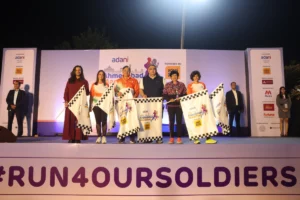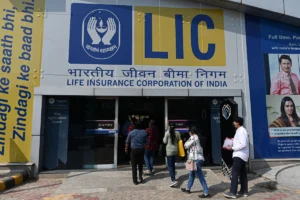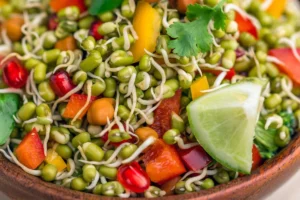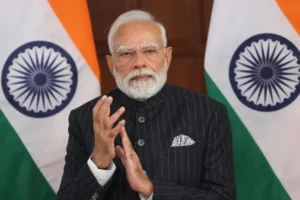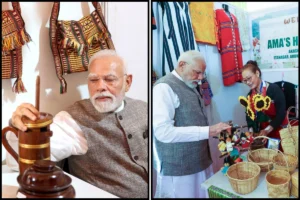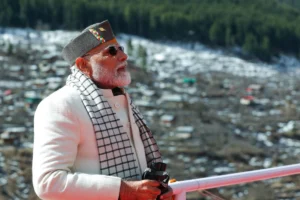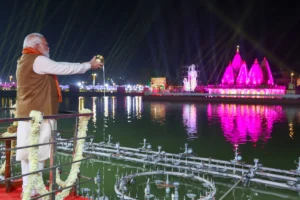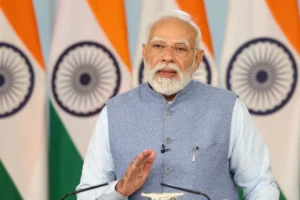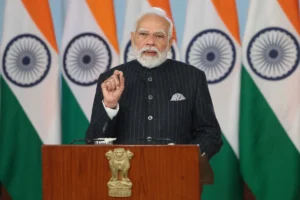
Kumara Krupa Road witnessed its annual closure to traffic as Bengalureans flocked to the renowned “Chitra Santhe,” the city’s beloved art fair. The 21st edition, following tradition, unfolded on the first Sunday of January, attracting an immense crowd estimated to be nearly five lakh visitors by the Karnataka Chitrakala Parishath, the fair’s organizing body. From 6 am to 9 pm, Bengaluru Traffic Police enforced restrictions on vehicular movement along Kumarakrupa Road to ensure a smooth flow of attendees.
Originating in 2002 with the mission of promoting ‘art for all,’ the Santhe swiftly expanded to become a hallmark event eagerly anticipated by emerging artists and art enthusiasts alike. Even amid the pandemic, the tradition persisted through a virtual platform.
Also Read: Lakshadweep Google Searches Surge Exponentially, Highest In 20 Years After PM’s Visit
Sanjay Lavakere, an artist entrenched in Bengaluru for 16 years, expressed his fortune at securing a slot for the second time after persistent attempts spanning five years. Reflecting on the fair’s growth, some artists and buyers opined on the inclusion of more exclusive selections, expressing concerns about the dominance of generic artworks and prints by established artists occupying significant space.
Regular attendee Usha Sathish, attending the fair for nearly 18 years, lamented the increasing presence of stereotypical art like Buddhas and Ganeshas. She advocated for greater diversity and innovation among artists to captivate Bengaluru’s adventurous crowd keen on experimental creations.
Also Read: Visually Impaired Muslim Poet Invited To Ram Temple Consecration Ceremony
Despite critiques, artists seemed attuned to the audience’s preferences. Lavakere, for instance, tailored a series specifically for the Chitra Santhe, promptly selling his vibrant works inspired by Turkish and Greek architecture by 4 pm, attesting to the event’s vibrant market and distinct tastes among buyers.
The fair’s diversity captivated friends Parvathy, Ragini, and Krish, who marveled at the varied artistic interpretations and visitors’ differing perceptions of art. For them, it was an intriguing exploration.
While senior artists criticized the event for leaning toward a more pedestrian variety of art, many participating artists adjusted their offerings to cater to utility or practical art. Dyaneshwar Randhai transformed his artworks into tote bags, while Alok Chakraborty’s intricate pen-drawn tree bookmarks found swift buyers at affordable prices despite his larger, abstract canvases being priced higher.
Also Read: Agri Exports Likely To Double To USD 100 Billion By 2030: Commerce Secretary
Chakraborty, a regular attendee for 15 years, acknowledged the demand dynamics, emphasizing the event’s value for artists at an affordable entry fee and accommodation for out-of-state participants. He cherished observing people’s enjoyment and aimed to return annually.
Yuvraj Devkar from Pune, a four-year participant, echoed a similar sentiment, highlighting the joy derived from appreciation rather than merely selling art. The event’s magnitude attracts numerous artists from Pune yearly, underscoring its significance in the artistic community.
The Chitra Santhe remains an evolving celebration of art, drawing both praise and criticism, yet undeniably serving as a vibrant platform for artists to engage with an enthusiastic audience eager for creative expression.
To read more such news, download Bharat Express news apps








